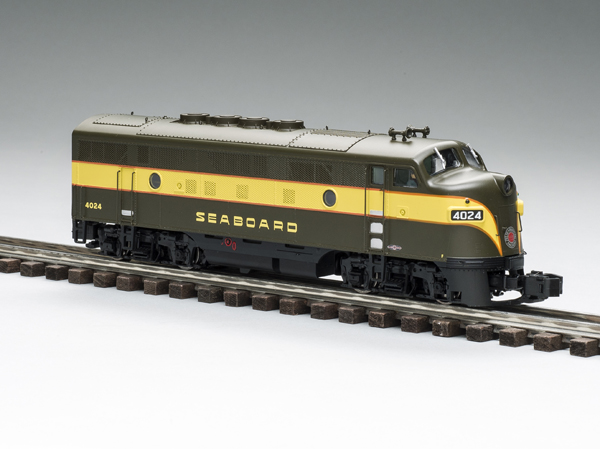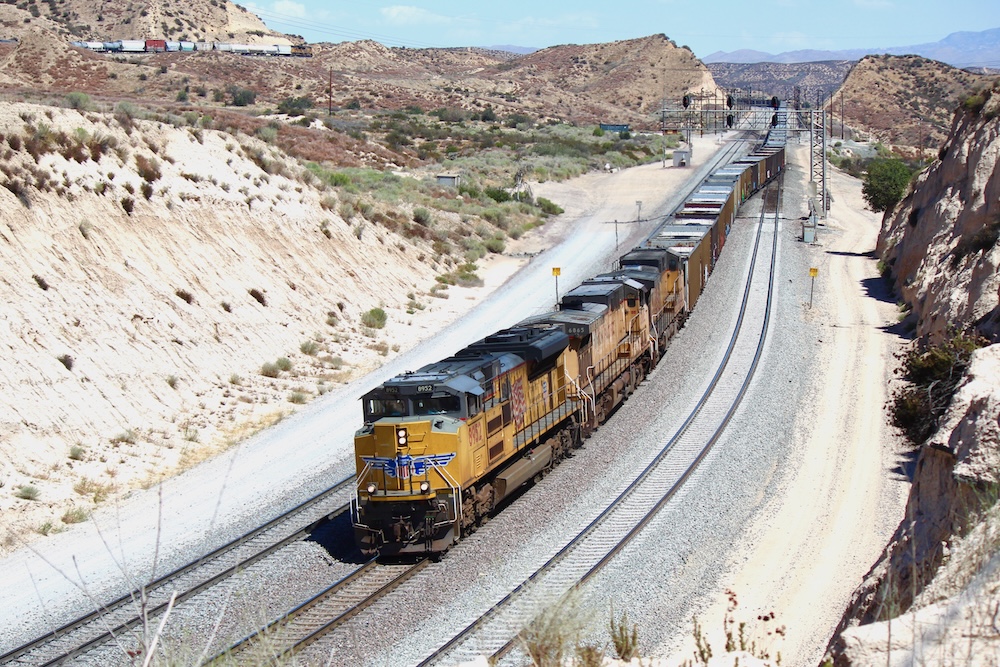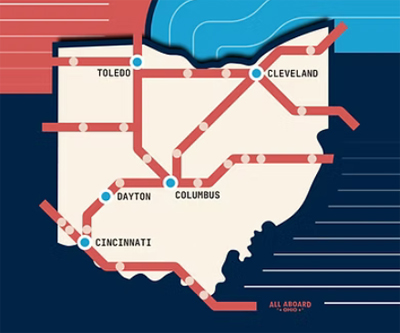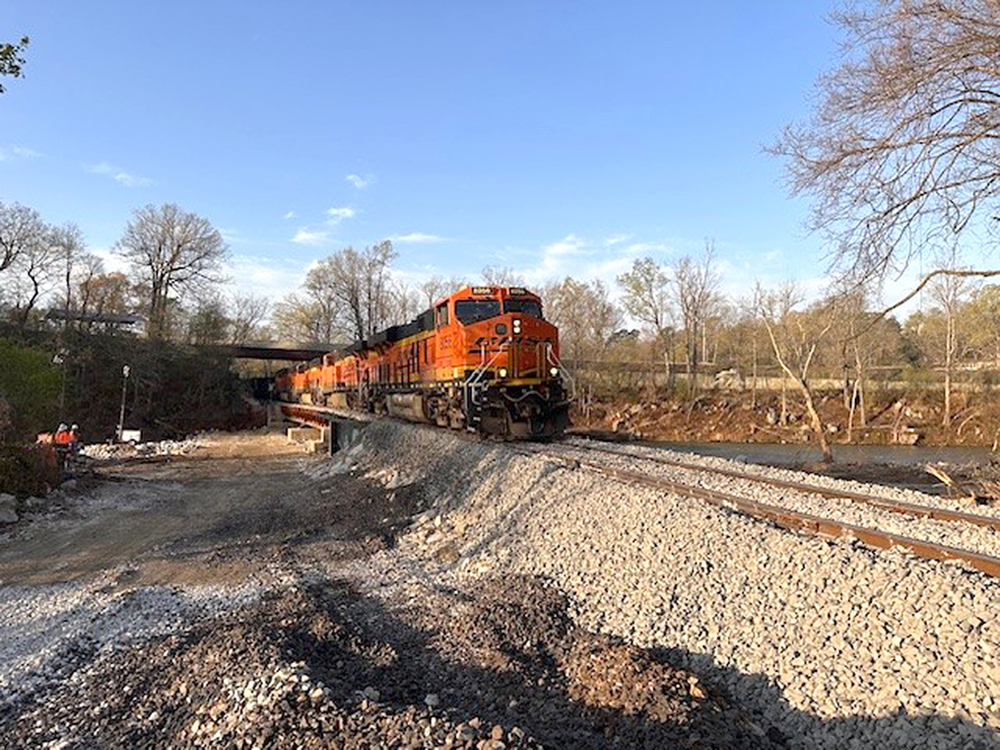Price: $379.95 (no. 35-20016-1) Min Curve: S-20 Cmd Low: 2.44 smph Cnv Low: 3.54 smph High: 67 smph Drawbar pull: 10.5 oz. Features: Two motor-driven trucks, Proto-Sound 3.0 command and sound system, operating couplers Current-production road names: Central RR of New Jersey, New York Central, Pennsylvania RR, Santa Fe, Seaboard Air Line, Union Pacific
For more than 20 years, the familiar rounded face of the cab unit dominated railroading. The Electro-Motive Division of General Motors developed the FT, F3, F7, and E-series of passenger locomotives, all of which proved the point of diesel locomotive economics and reliability and shuffled steam locomotion to museums and scrapyards. At one point it seemed like every railway in the country – large or small – had a few EMD units on their roster.
So if you run a transition-era railroad, F units aplenty fit in. If you operate a more modern theme, you can’t go wrong with a heritage unit or two for excursion runs. By the way, the Seaboard owned 11 F3s (no B units) numbered 4022-4032.
Opening the box
MTH’s re-launching of the S-Helper locomotive line is a great thing for the S gauge community and is an interesting event for the O gauge gang (after all, don’t we hope to eventually convert “those guys”?).
The F3’s weight and feel suggest quality assembly – no rattles or loose parts, and the weight didn’t shift when the model was held in different positions.
Both of the forward windows have wiper arms. The compound curves of the nose are flawless. The classification lights are situated just above the large number boards. Below the headlight you’ll see the front access hatch. It seems to be a separate piece, though encouragement from a fingernail didn’t make it open. It does have an add-on door handle, and there are add-on grab irons on either side of it. The pilot is smooth, and the coupler has a wide range of swing. There are no brake or multiple-unit or uncoupler details, although the rear of the unit has a nice uncoupler arm.
The sides are beautiful. Nothing we haven’t seen in O gauge, but made all the more impressive because of the smaller scale. The cab door is solid, and grab irons are bracketed by fine wire. The cast-in kick plates are delicately painted silver, and cab steps are by the trucks. This is mirrored at the rear access hatch, although the door lacks windows. Similarly, the aft corners have steps and grab irons for hostlers or brakemen to ride when the diesel is shifting position.
There is a see-through screen running from behind the cab door to the rear of the shell, as well as over the vents between the portholes. (Later phases of F-unit production varied the number of portholes and changed from a screen to a horizontal grill.)On the roof you’ll find two horns above the cab. Behind are screens over the dynamic brakes and add-on lift rings on the riveted panel. On the next panel are four high-shroud fan housings. Add-on lift rings bracket the exhaust stacks. On the final roof section are two lift rings.
The rear of the locomotive is Spartan, with a cast-in and solid door and diaphragm. This design works, mainly because the rear normally faces another locomotive or a freight car. But there is a surprise here – remove the diaphragm and you’ll find controls for light brightness, DCS or DCC selection, and headlight direction. The unpowered A unit (controls are for light brightness, power, and headlight on/off.
There is, as mentioned, a fine wire simulated uncoupler arm running the width of the end just above the coupler.
Painting of the tasteful olive green, red and yellow Seaboard paint scheme was effectively applied, and we noted no errors. Color separation was razor sharp, and there was no bleed over the see-through screens.
On the test track
American Flyer enthusiasts have often used variations of the slogan, “S is the perfect scale.” I’ve got to tell you, even as a devoted O gauger, I’m not sure they’re wrong. S gauge equipment is smaller and lighter, but in most cases no less detailed than its O gauge counterparts. Running in conventional mode, S gauge locomotives seem to deliver better performance than any pre-command control (think speed control) O gauge engine. Oh, and their prices tend to be lower than comparable O gauge gear. Suffice it to say, with our test sample, performance carried the day.
I improvised a test track using Lionel S-20 FasTrack and used an MTH no. Z-4000 transformer for both conventional and command operation (the latter using the MTH Digital Command System App for the iPhone).
The F3 is powered with a single can-style motor driving both trucks. Operation was exceptionally smooth. With the volume off, motor noise was virtually nonexistent, save for the clicks heard as the model ran over rail joints.
Being a bit constrained for straight-line running, we weren’t about to time the high-speed average at 67 scale miles per hour. Our conventional-mode low-speed average was 3.54 scale miles per hour while the command-mode low-speed average was 2.44 scale miles per hour.
Our drawbar pull was 10.5 ounces.
The sound reproduction was good, with crew voices being clear. The lighting package was suitably bright.
For scale-oriented operators, the model comes with scale wheels, scale couplers, and a solid (no front coupler) pilot. Instructions for swapping them out are in the owner’s manual.
This model was a little gem rolling down the line. It is a capable performer that possesses ample scale-like detailing, and comes in a good first run selection of road names. The F3 diesel from MTH Electric Trains may become the pride of your S gauge fleet.














